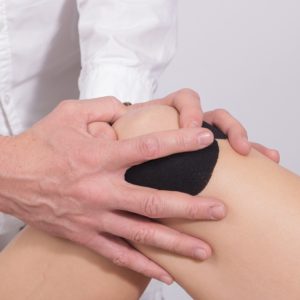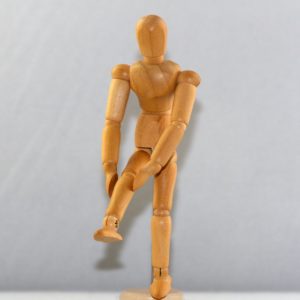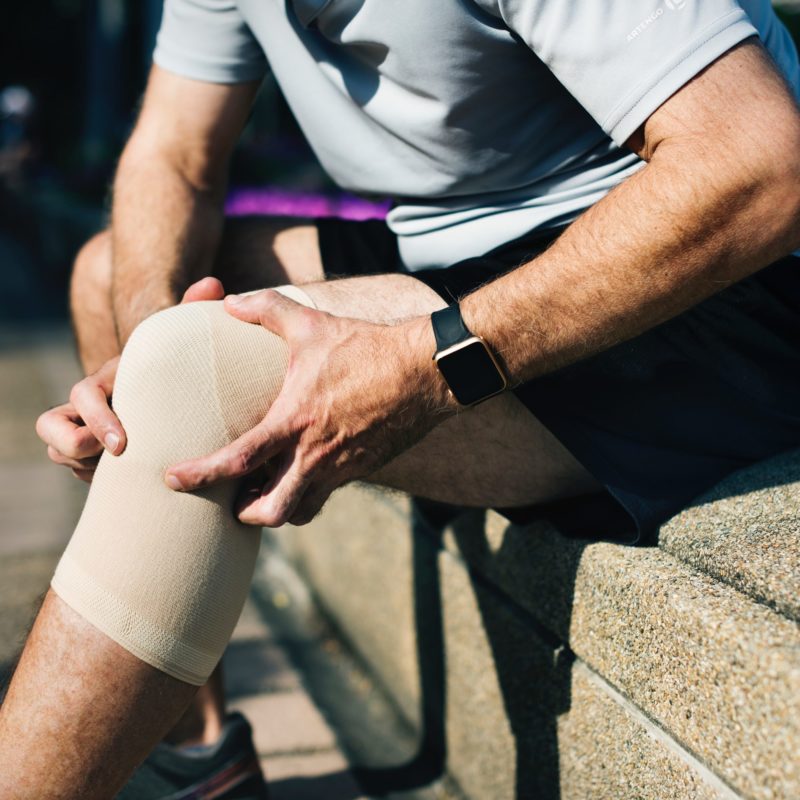Knee pain affects millions of people each year. It is the most commonly replaced joint by orthopedic surgeons. Patients receive over 600,000 new knees every year. There are many reasons why a knee should be replaced. Some knee replacements are needed because of prior trauma from car accidents or traumatic sports injuries, but most are replaced after years of slow arthritic degeneration.
 Frequently the degeneration of the knee stems more from lifestyle factors than from bad genetics, weight, or even old age. The idea that at a certain age you should expect bad knees is utterly false. Likewise, weight may contribute to knee pain, but the sedentary lifestyle associated with weight gain is more likely the cause of knee degeneration than simply the addition of a few extra pounds. Knee pain is more of a function of lifestyle choices and how we use knees more than the amount of cartilage found in this joint. So what lifestyle factors lead to the breakdown of cartilage and increased inflammation in the knee? What activities can accelerate degeneration of the knee joints? Here are three bad habits that cause knee pain:
Frequently the degeneration of the knee stems more from lifestyle factors than from bad genetics, weight, or even old age. The idea that at a certain age you should expect bad knees is utterly false. Likewise, weight may contribute to knee pain, but the sedentary lifestyle associated with weight gain is more likely the cause of knee degeneration than simply the addition of a few extra pounds. Knee pain is more of a function of lifestyle choices and how we use knees more than the amount of cartilage found in this joint. So what lifestyle factors lead to the breakdown of cartilage and increased inflammation in the knee? What activities can accelerate degeneration of the knee joints? Here are three bad habits that cause knee pain:
- Sitting Too Long
Sitting in one position for longer than 20 minutes has been shown to start a chain reaction that can lead to knee pain. Knee pain over the front of the knee above, below, or under the kneecap is often caused by prolonged sitting. When we sit, the first muscles in the leg that will tighten and shorten are the hip flexors. Studies show that after 20 minutes this muscle group will start to form shortened fibers, compressing the knee, hip, and lumbar spine. The sitting position goes on to create an inhibition of the glute muscles causing a destabilization of the hip and lumbar spine. With a lack of stability in the hip and lumbar spine, the hamstrings and quads will tighten to compensate. This compensation pattern can cause hip and low-back pain, but most frequently causes knee pain.
The fact that the hamstrings and quads are not designed to produce stability but are more useful for speed and power during leg motion makes them ill suited for lumbar spine and hip stability. This creates a consistent need for these muscles to become tight, leading to chronic fibrosis and inflexibility. This lack of flexibility at the hip and lumbar spine causes an overload of the knee during movements like squatting, walking up and down stairs, and with running.
How to fix it: First, set a timer to stand up and move every 20 minutes. March in place, walk to the bathroom, do five lunges, or simply just stand up out of the chair. It really does not matter what you do, just move. You can also try a foam roller on the quad and hamstrings to help with the knee and hip mobility. If neither of these self-help strategies work, see an Active Release Technique® specialist to break-up the fibrosis of the hips and legs. I have seen many chronic knee and hip pain patients respond very well to this technique over the past 14 years. I find it to be my favorite treatment for achy knees and stubbornly painful hips.
- Crossing the Legs
Crossing the legs when sitting or sleeping can make a bad situation even worse. The habit of crossing the legs frequently leads to knee pain on either side of the knees. If prolonged sitting was not bad enough, sitting with one leg crossed over the other at the knee or the ankle accelerates the fibrosis of the leg muscles and greatly leads to an increase of load on the knee. And it is not just sitting! Sleeping on your side with one or both legs flexed into the fetal position will have a similar effect. This not only causes the same pattern described with sitting but will add an extra load from the tight groin muscle that crosses the knee. This static posture is like throwing gas on a fire to an already bad situation.
How to fix it: After implementing a 20-minute maximum sitting rule, avoid crossing the legs for even one minute. Place a footstool under the desk for both feet to rest on. If you are sleeping on your side, place a small pillow between your knees and keep your legs long and in only a slight bend. Try performing a groin stretch or using a clock-lunge matrix to open the hip and keep the knee injury free.
- Not Squatting
 The squat is one of the most basic human movements. You have been doing it since you were able to stand. However people with knee pain seem to shy away from squatting in fear that they will hurt their knees when in fact, they are assuring they will continue to have knee pain. Without proper and frequent squatting movements, the hip capsule will become tight and fibrotic. This creates a shift of load during activities like bending and lifting, climbing stairs, and even walking that will cause knee pain. If this is allowed to go on for several years degeneration of the knee joint will accelerate leading to the likelihood of a needed joint replacement.
The squat is one of the most basic human movements. You have been doing it since you were able to stand. However people with knee pain seem to shy away from squatting in fear that they will hurt their knees when in fact, they are assuring they will continue to have knee pain. Without proper and frequent squatting movements, the hip capsule will become tight and fibrotic. This creates a shift of load during activities like bending and lifting, climbing stairs, and even walking that will cause knee pain. If this is allowed to go on for several years degeneration of the knee joint will accelerate leading to the likelihood of a needed joint replacement.
How to fix it: Learn to squat properly by following this progression: Doorway squats, to ball squats, to free standing box squats. This natural progression of the squat motion from easier to harder will help to train you to use the hips again and take pressure off the knees.
No matter what problems you are facing with your knee pain, help can be found. Start by seeking a sound diagnosis of the problem. This will get you in the hands of the right professional who can help you. You don’t have to let knee pain define your life. Let us know if you need chiropractic or Active Release Technique® assistance with your knees.

Daryl C. Rich, D.C., C.S.C.S.






